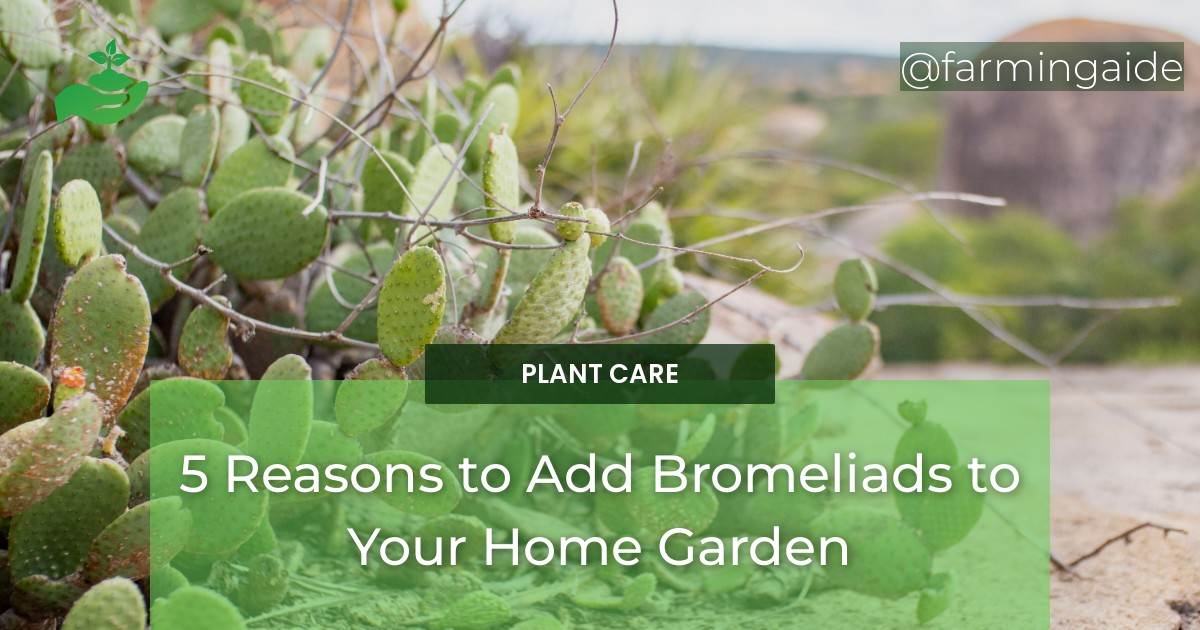Bromeliads are a popular choice for home gardeners, and for good reason. These unique and colorful plants add a touch of tropical flair to any garden, and are relatively easy to care for. But there’s more to bromeliads than just their aesthetic appeal. In this article, we’ll explore the many benefits of growing bromeliads, as well as tips for selecting and caring for these plants, incorporating them into your garden design, and managing pests and diseases. By the end, you’ll have a comprehensive understanding of why bromeliads are a must-have for any home garden.
Benefits of Growing Bromeliads
There are numerous benefits to adding bromeliads to your home garden. Here are just a few:
- Adds color and texture to the garden: Bromeliads come in a variety of vibrant colors and unique textures, making them a great addition to any garden.
- Low maintenance and easy to care for: Unlike some other plants, bromeliads require minimal maintenance and are relatively easy to care for.
- Can be grown indoors or outdoors: Depending on the variety, bromeliads can be grown both indoors and outdoors, making them a versatile choice for any space.
- Attracts pollinators: Bromeliads produce beautiful flowers that attract pollinators such as bees and butterflies to your garden.
- Can be used as ground cover or in containers: Bromeliads can be grown in the ground as a ground cover, or in containers for a pop of color on your patio or balcony.
Selecting and Caring for Bromeliads
When selecting bromeliads for your home garden, it’s important to choose the right variety for your climate. Some varieties are better suited for warmer or cooler climates, so do your research before making a purchase. Additionally, bromeliads have specific soil and light requirements, so be sure to provide them with the proper conditions for optimal growth. Here are some tips for caring for your bromeliads:
- Watering and fertilization: Bromeliads require regular watering, but be careful not to overwater as this can lead to root rot. Fertilize your bromeliads every few months with a balanced fertilizer.
- Pruning and propagating: Prune off any dead or damaged leaves to keep your bromeliads looking their best. You can also propagate bromeliads by removing offsets and planting them in their own pots.
Incorporating Bromeliads into Garden Design
Bromeliads can add a unique touch to your garden design. Here are some ideas for incorporating them into your outdoor space:
- Adding a focal point: Large bromeliad species, such as the popular Aechmea or Vriesea, make great focal points in a garden bed.
- Using smaller varieties for borders and accents: Smaller bromeliads, like Neoregelia or Guzmania, can be used to create borders or add pops of color throughout your garden.
- Creating a tropical feel: Bromeliads are often associated with tropical landscapes, so use them to create a tropical oasis in your own backyard.
- Using bromeliads in hanging baskets or vertical gardens: Some bromeliads, such as Tillandsia, can be grown in hanging baskets or mounted on walls for a unique and eye-catching display.
Seasonal Planning and Crop Rotation
When it comes to planting bromeliads, timing is important. Here are some tips for seasonal planning and crop rotation:
- Best time to plant: The best time to plant bromeliads is in the spring or fall, when temperatures are mild.
- How to rotate bromeliads with other plants: Bromeliads can be rotated with other plants in your garden to keep the soil healthy and prevent disease. Simply remove the bromeliad and replace it with another plant for a season, then rotate it back in.
- Overwintering and protecting from frost: Some bromeliads are sensitive to frost, so be sure to bring them indoors or protect them during the winter months.
Soil Management and Composting
Proper soil management is essential for the health of your bromeliads. Here are some tips for preparing soil and using compost:
- Preparing soil for bromeliads: Bromeliads prefer well-draining soil with good aeration. You can add perlite or sand to improve drainage.
- Adding organic matter: Adding organic matter, such as compost, to your soil can help provide essential nutrients for healthy growth.
- Composting techniques: Composting is a great way to create natural fertilizer for your bromeliads. Be sure to use a balanced mix of green and brown materials for best results.
Pest and Disease Control
While bromeliads are generally low maintenance, they can still fall victim to pests and diseases. Here are some common issues and how to address them:
- Common pests and diseases: Some common pests for bromeliads include mealybugs, scale, and spider mites. Diseases can include root rot and fungal infections.
- Natural and chemical solutions: For minor pest infestations, you can use natural solutions such as neem oil or insecticidal soap. For more severe cases, chemical solutions may be necessary.
- Preventing and treating: To prevent pests and diseases, be sure to regularly inspect your plants and remove any affected areas. Proper care and maintenance can also help prevent issues.
What are the benefits of propagating bromeliads in your home garden?
If you’re looking to expand your home garden, consider propagating bromeliads. With our stepbystep bromeliad propagation tutorial, you can easily create new plants from existing ones. This will not only save you money but also allow you to enjoy the beauty of bromeliads throughout your garden.
Conclusion
In conclusion, bromeliads are a fantastic addition to any home garden. Not only do they add color and texture, but they are also low maintenance and attract pollinators. By following the tips outlined in this article, you can successfully select, care for, and incorporate bromeliads into your garden design. So why not add some bromeliads to your garden today and enjoy their unique beauty and benefits?


